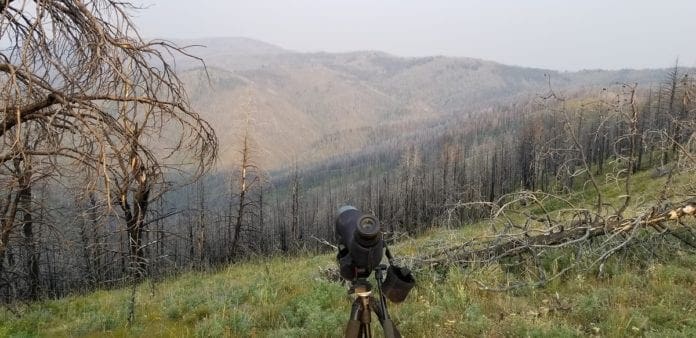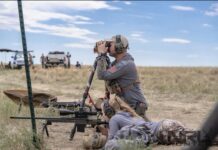
“My hunting area burned!! Now what do I do?” I have heard this many times. My first thought is, “You lucky dog!” Fires have been on the increase over the past several years more than likely from all the fire suppression and logging restrictions catching up to us. While these fires can wreak havoc on people’s lives, from hunting standpoint, fires and burns are a very natural and regenerative occurrence and can have positive impacts on an area.
What started it for me
My first real scouting trip in a burn was almost 20 years ago. I already had a couple backpack scouting trips in the Selway Bitterroot Wilderness of Idaho but was tired of the thick timber where I couldn’t spot anything. So when I noticed an old big burn that was off in the distance that looked very open in comparison to where I had been, I decided that would be my next destination.
That next trip started with high expectations: I had visions of seeing bucks and bulls all over the open landscape. It didn’t work out so well; I spent days in this burn and was disappointed by the lack of animals. I saw tracks and jumped some elk a few times, but picking them out of this open landscape was very unproductive. This same thing happened on my next few trips to burns and I would have given up on them, but I knew the animals were there based on all the tracks.
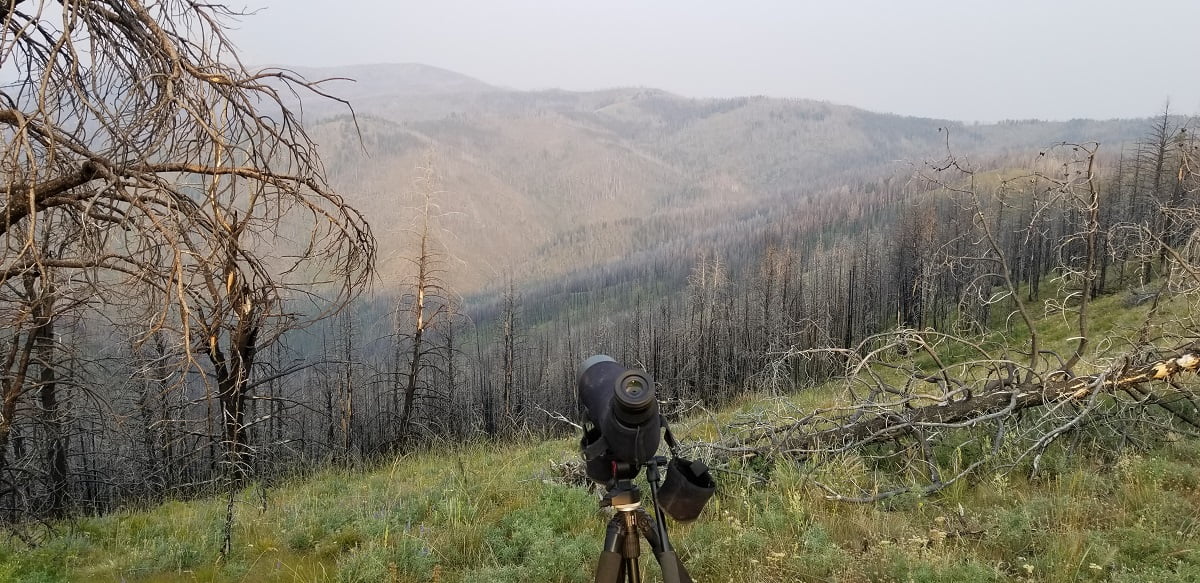
Since then I have learned that burns just take a lot more patience to glass. There is also what I call the “too much green effect” that takes place in big burns–meaning that there is so much suitable habitat and so many places to look, that it can be hard to slow down and glass with enough efficiency to actually start spotting game. On top of that, all the dead timber and debris can make picking the country apart tedious.
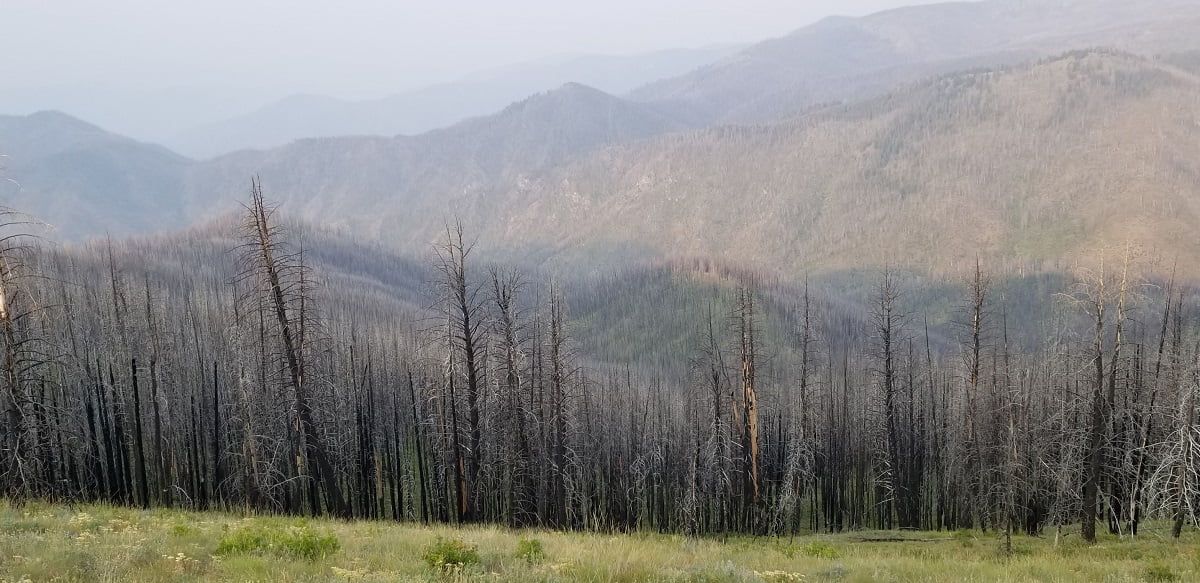
Over the last several years I have started spending more time scouting burns and have determined that they can be an absolute game-changer in the right circumstance. They have the ability to transform the habitat, fueling stagnate game populations. I have witnessed large increases in populations in some burn areas. In my opinion, antler growth can increase in some burn areas, primarily those with poorer habit to begin with. Some of the best bucks I scout are in burns and most of them are in areas not historically associated with big bucks. I have even seen where a burn takes place in certain dense areas where there is not any true mule deer habitat and only a very small population. It then becomes great mule deer habitat allowing the population to increase in that immediate area.
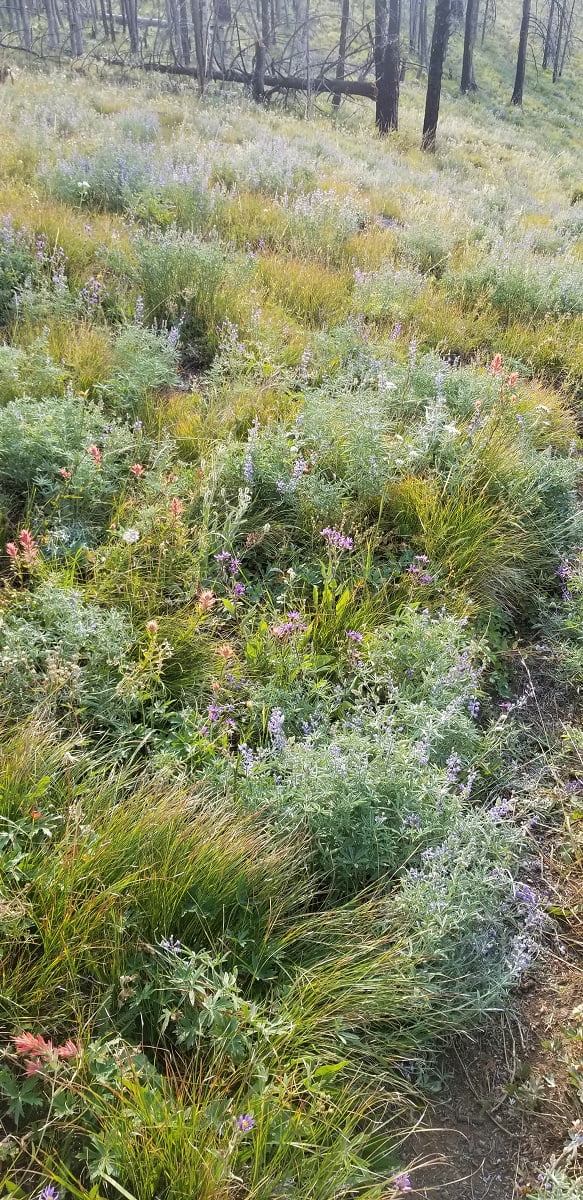
Not All Burns are Equal
There are so many variables with burns and I’m still learning what types are best. With all my scouting over the years, I have defiantly noticed huge differences in burns–even the same burn can have different outcomes on different mountains. For instance, one year there was a burn in some of my favorite country and I was worried about it due to the particular habitat the deer used. Prior to the burn, it was my go-to place to take youngsters hunting and would see lots of deer–often as many as 100 per day and usually a hand full of elk . I remember on the way to scout it two years after the burn took place, I glassed it from afar on my way to it and was relieved when it looked like the brush the deer used came back; however when I reached the area and scouted it I realized that the vegetation was different and did not see a deer or deer track on the mountain. However, it had become an elk magnet, as I ended up seeing close to 200 head that morning seemingly in every draw.
It has since come back as deer habitat to a degree but not like it was before the burn. Same burn but next mountain over which was never as good deer country to begin with, came back a lot different with an increase in aspens and shrubs and just looked like a huge improvement and actually had a significant improvement in deer numbers. I’m not sure if it was the type of habitat that burned or if one burned a lot hotter than the other that caused such a difference in resurgence.
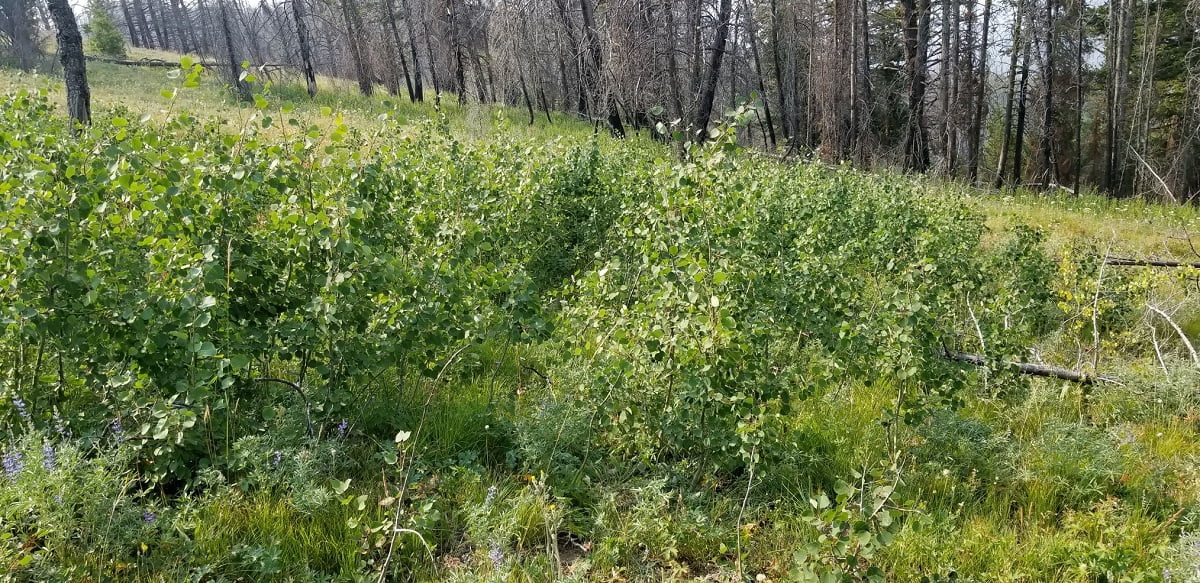
Just this year I scouted a large burn from several years ago in a place that I had spent time prior to the burn. I had three different mountains I wanted to scout. They all looked the same and good on Google Earth. The first day I scouted my top choice. While it was green and looked good from a distance, it just didn’t come back great. I covered a lot of miles and didn’t see but a few sets of deer and elk tracks.
The next day with lower expectations, I hit the next mountain and right away by just looking at the vegetation in the dark it looked a lot better and in fact had lots of deer sign. I ended up spotting quite a few deer along with some nice bucks, but virtually no elk sign.. The third day, I hit the last mountain. I found that it had come back very well but differently. It has a more mosaic burn pattern with islands of unburned habitat. I ended up seeing a lot of both elk and deer.
The Best Burns
As for what year to hunt burns? I’ve seen burns become a game magnet a month after the burn occurred, especially if there is a little moisture and fresh forbes start shooting up. I’ve also noticed game licking the ash. I’ve even seen game animals hitting logging slash piles after they burn them and while they’re still smoldering.
I would say for the most part three to seven year-old burns hold the best odds of being good; however the last couple years I have scouted a few burns in that age class in really good habitat (before the burn) with high expectations but have been very disappointed. In fact, in one burn, I didn’t see an animal or any sign, but outside the burn had great numbers.
I have found burns that were good for a couple years then fizzled out once the vegetation grew up. In some areas, the vegetation grows back very quickly and can turn into a jungle in a couple years often becoming much thicker than it was before the burn.
Burns on the winter range can go either way. I’ve seen burns in some winter ranges come back phenomenally creating much more browse for the deer and elk, and more than likely increasing the overall carrying capacity of the area. Then on the flip side I’ve noticed some come back as cheat grass or turn to a wasteland not usable any longer for the wintering animals.
Then there are some that are still good 20+ years later. The great burn of 1910 of North Central Idaho left some of the best elk habitat on the planet for close to 70 years before becoming overgrown and losing its benefits. The burns around 2000 in and around the Middle Fork of the Salmon improved the habitat so much that the mule deer population exploded, and are still thriving on the great habitat. While burns in the Selway that same year never had near the same effect.
One thing that I have noticed it seems on average burns are more beneficial for elk quicker than they are for mule deer. This is likely because the grasses that grow up right after a burn it often takes longer for the mule deer browse to grow. But once it does, it often swings in favor of deer. In the aforementioned 2000 Middle Fork burn, I went on a early season mule deer hunt without an elk tag and ended up seeing eight herds of elk, all with screaming herd bulls not one other hunter in pursuit. Yet I saw very few mule deer and no shooters. With all that said I would say more times than not they are an improvement on the habitat with a few an improvement to epic proportions.


How to Hunt Burns
First off, burns can be tricky to hunt as I talked about the “too much green” effect. With burns, I have found glassing them is often a game of angles. I always try to find a glassing spot where I can glass against the grain or look into from an opposite ridge. I will try and pick a vantage point that lets me look into as much prime country as possible. These points need to be carefully picked out ahead of time, or you may be spending the entire morning looking for a place to glass from as they are often times deceiving from afar or especially on Google Earth. It will seem like an open burnt ridge or knob would be easy to glass from, but when you get there, it can almost be as hard as a timbered covered ridge to glass from.
My midday scouting goes a long way to picking my area while covering country. I am constantly looking for sign, mainly tracks as these seem to show up well in burn areas. There can be many different aspects to a burn and I focus my glassing on the aspects where I find the freshest sign.
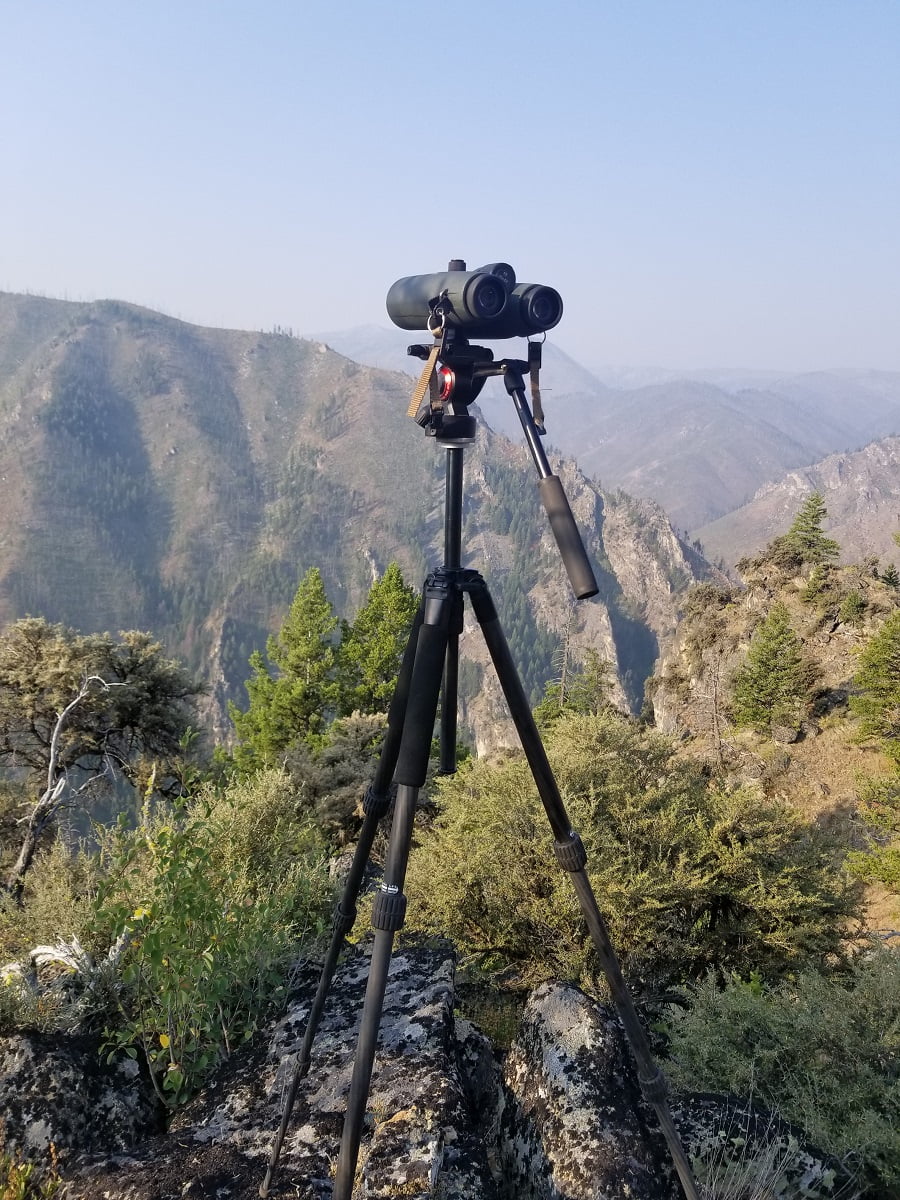
Once I find my glassing spot, I start picking the terrain apart very slowly and methodically. This type of terrain often requires me to be more patient and thorough while glassing than other type’s. Once I find and animal that I want to take a better look at, I have to remember to carefully mark the spot where I spotted the animal before pulling away with my binos, I can’t tell you how many times I’ve been buried in my binos picking the terrain apart and then all of sudden I spot a good looking buck or bull and immediately go for the spotter just to realize I have no idea where I seen it or sometimes even what ridge I was looking at. Making stalks in this terrain also often requires carefully picking a route as there is often no discernable landmarks, just a bunch of dead trees.

The best times I have found to spot animals in burns is early summer and with snow on the ground. I like to scout these as early as possible in the scouting season when the terrain is its greenest and animals are their reddest as they seem to pop quite a bit more against the backdrop. Scouting at this time will allow you to focus in on the areas when it is dryer and they blend in a lot better. There is just something about a bunch of grey timber, dry vegetation and grey mule deer that is not easy. I can often spot more than twice the deer in early summer as I can latter when it dries out in this type of terrain.
Hunting with snow on the ground is often the best time to spot animals in burns. The snow creates a perfect backdrop in which they stand out in contrast, especially when animals have wet coats making them appear darker. Spotting them bedded is very doable when glassing into country with snow as the snow covers up the natural camouflage of the bedding areas.
Anther advantage to hunting a burn with snow, especially fresh snow that is not crunchy, is tracking. I feel that in the right conditions, burns are among the best habit for tracking. Once you on a good track you have a huge advantage to find the animal before he finds you. I like to follow the track glassing as much as possible out ahead of me whlie moving as carefully as possible, all the while considering the wind. I usually spot the animal first as I can usually see up to a couple hundred yards out in front, unlike tracking in green timber. Now keep in mind traversing all this snow-covered dead timber can be treacherous and just plain tough.
Wrapping It Up
Now I realize that I didn’t divulge a lot of details on which burns are good but it all boils down to preseason scouting with boots on the ground. You don’t even need to see the animals, just cover as much country as possible looking for tracks as they don’t lie. When you find a good burn, you will know.
I would also encourage you to seek out the burns that aren’t talked about, even small 50-acre burns. Once the cat gets out of the bag on a burn, everybody and their mama will be hunting it. That burn I mentioned earlier where I saw the 200+ elk? Anybody hunting it would have had an awesome two to three year run, as on the fourth year, I talked to a game warden who told me he counted 30 bulls killed on opening day when the prior three years he had not seen many people hunting it all.
Both onX Hunt and BaseMap have a cool feature that shows burn boundaries from the past 20 years. From what I have found, they are quite accurate and include burns from the current year. Google Earth is great for looking at burns, however it isn’t updated every year and I have noticed quite a few burns from even several years ago do not show up on it yet.
One last thing to keep in mind is to be careful when traveling in a burn. There is a lot of unstable ground and they are more prone to wash outs, rockslides, very muddy conditions. Last but not least, deadfall which can be very dangerous to navigate. Go slow and pick your path. For camp, be sure to find a safe place out of the way of any potential falling trees. Be sure and carry a chain saw in your vehicle as it is very common to have trees constantly falling across the road.

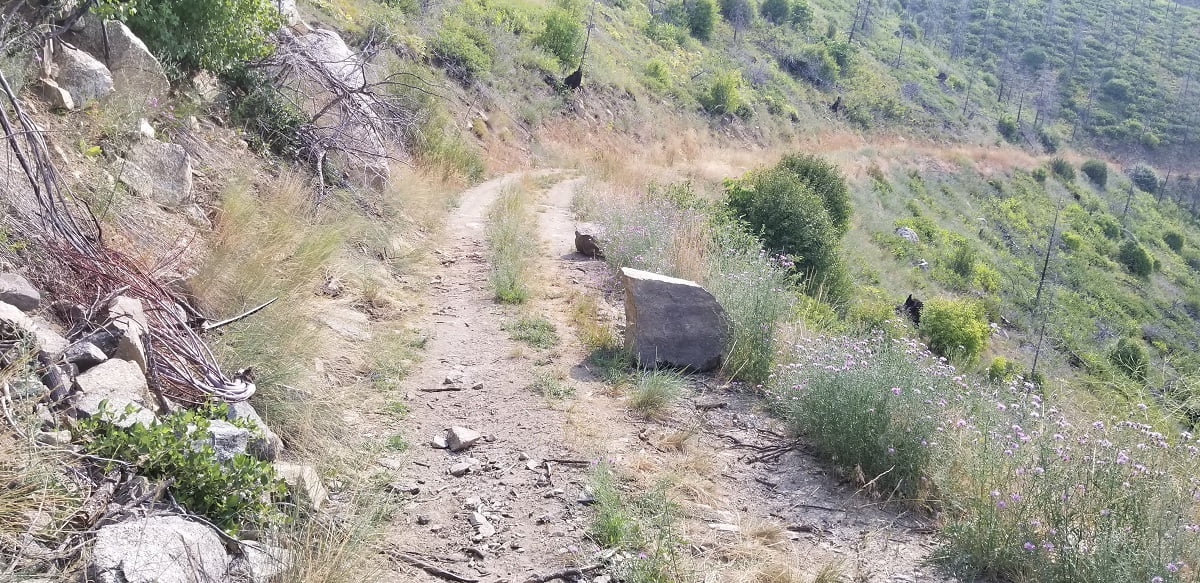
You can comment or ask Jim questions here.














